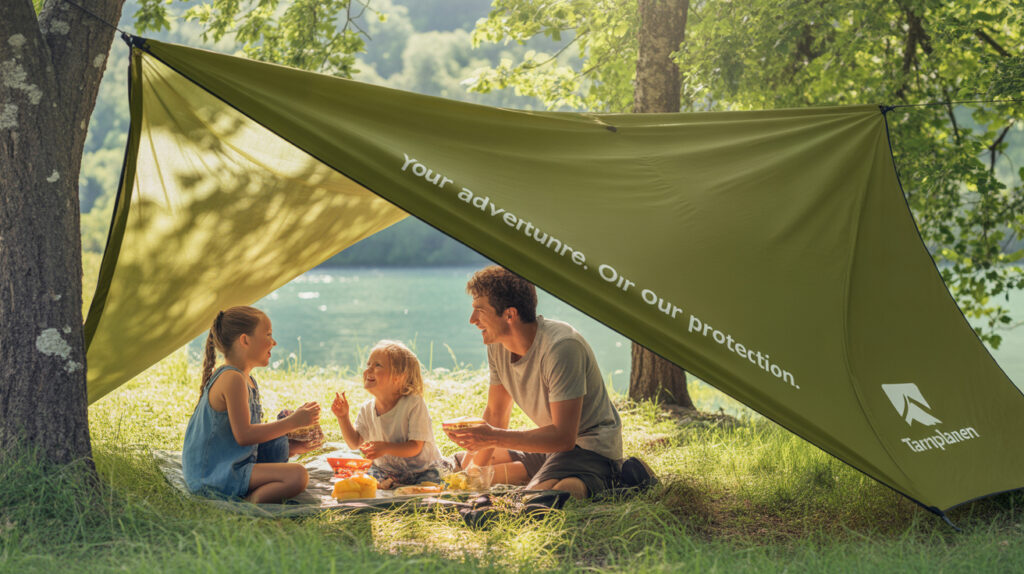What Is Tarnplanen? An Introduction
The word tarnplanen refers to a tarpaulin—a versatile, weather-resistant sheet used across Scandinavia and beyond to cover, protect, and shelter. From industrial sites to backyards and camping trips, tarnplanen proves itself as a must-have solution for anyone needing reliable, portable protection.
The Many Uses of Tarnplanen
Tarnplanen stands out for its adaptability. You will find it in:
-
Construction: Protects tools, scaffolding, bricks, and lumber from rain or dust.
-
Home & Garden: Covers firewood, outdoor furniture, swimming pools, sandboxes, or even as temporary roofing.
-
Transport & Logistics: Shields goods on open trucks, boats, or trailers.
-
Events & Festivals: Acts as pop-up tents, weatherproof flooring, or stage covers.
-
Farming: Covers tractors, feed, grain, hay bales, and greenhouses.
-
Emergency & Disaster Relief: Quickly creates makeshift shelters and protects vital supplies.
-
Sports & Recreation: Provides ground cover for team benches, goalposts, or acts as a field rain cover.
-
Camping & Outdoor Activities: Used as tent footprints, hammocks, rain flys, or windbreaks.
In short, tarnplanen adapts to almost any environment, offering protection from water, wind, UV rays, snow, and dirt.
Types and Materials of Tarnplanen
When choosing a tarnplanen, material and type matter:
Polyethylene (PE) Tarpaulins
-
Lightweight, waterproof, and flexible
-
Often used for temporary cover and general outdoor use
-
Common in blue, green, and silver colors
Polyvinyl Chloride (PVC) Tarpaulins
-
Heavy-duty and extremely durable
-
Highly resistant to oil, grease, acids, and mildew
-
Suits industrial and transport applications
Canvas Tarpaulins
-
Natural fibers, usually cotton, sometimes with wax or chemical treatment
-
Breathable, strong, less prone to condensation underneath
-
Preferred for camping and covering items that require air circulation
Mesh Tarpaulins
-
Allow air and some light through
-
Used for shading, wind protection, or as privacy screens
Fire-Retardant Tarpaulins
-
Designed for environments where safety regulations demand flame resistance
-
Used in construction, welding, and event spaces
Common Features Across All Types
-
Reinforced edges: Double-stitched or heat-sealed for strength
-
Grommets: Metal or plastic eyelets at intervals for secure fastening
-
UV Protection: Prevents damage and extends lifespan outdoors
How to Choose the Right Tarnplanen
Consider these factors before purchasing:
-
Size: Always choose a tarnplanen larger than the item or area you need to cover. Oversized tarps are easier to secure and more effective.
-
Thickness & Strength: Measured in GSM (grams per square meter) or mils (thousandths of an inch). For rough or frequent use, choose a thicker, higher GSM model.
-
Color: Dark colors absorb more heat, while silver or white reflect sunlight and stay cooler.
-
Waterproof vs. Water-Resistant: True waterproof tarps provide complete protection. Canvas tarps offer some breathability but may let water seep in over time.
-
Edge Construction: Double-stitched or reinforced hems resist tearing under tension.
-
Attachment Points: Well-placed, rustproof grommets make securing easier and more reliable.
Tips for Using Tarnplanen Safely and Effectively
-
Secure firmly: Use bungee cords, rope, or tarp clips through grommets.
-
Avoid sharp corners: Place padding under corners or edges to prevent punctures.
-
Slope for drainage: Angle your tarnplanen so rainwater runs off, not pools.
-
Check regularly: Inspect for rips, loose grommets, or excessive wear, especially after storms.
How to Maintain and Store Tarnplanen
Proper care will extend the life of your tarpaulin:
-
Clean after use: Hose off mud and debris, then scrub gently with mild soap and water.
-
Dry thoroughly: Prevent mold and mildew by drying completely before folding.
-
Repair promptly: Use tarp repair tape or patch kits for small holes or tears.
-
Store smart: Keep in a cool, dry place out of direct sunlight, ideally rolled instead of folded to avoid creases.
Buying Advice: Where and How to Get Tarnplanen
You can buy tarnplanen at:
-
Hardware and building supply stores
-
Garden centers
-
Outdoor and camping retailers
-
Farm supply shops
-
Online marketplaces offering a variety of brands, thicknesses, and colors
Always check product specifications and customer reviews before making a purchase.
Sustainability and Eco-Friendly Choices
Many manufacturers now offer recyclable or biodegradable tarpaulins. Look for eco-friendly materials if you plan to replace tarps frequently or use them in sensitive environments.
Frequently Asked Questions About Tarnplanen
What does “tarnplanen” mean?
It means tarpaulin—a waterproof, protective sheet—commonly used throughout Scandinavia and much of Europe.
Which tarnplanen material should I choose?
For general outdoor use, polyethylene works best. For breathability and durability, choose canvas. For industrial settings, PVC is ideal.
Can I use tarnplanen for winter protection?
Absolutely. Tarnplanen shields items from snow and ice just as well as it does from rain and sun.
How do I prevent my tarnplanen from tearing?
Always use all grommets when securing. Avoid overstretching and check for wear near edges.
How long does a quality tarnplanen last?
With good care, high-quality tarpaulins can last several years—even with regular outdoor use.
Is tarnplanen safe for food or drinking water storage?
If you plan to cover food or potable water, make sure your tarnplanen is food-safe and free from toxic coatings or residues.
Can I recycle my old tarnplanen?
Many tarps made from polyethylene or polypropylene can be recycled—check your local recycling rules.
Conclusion
Tarnplanen stands as a reliable solution for protecting people, property, and projects from nature’s challenges. Whether you’re a contractor, farmer, camper, or homeowner, the right tarpaulin can save you time, money, and effort. By understanding the different types, using best practices, and choosing quality materials, you get maximum value from your tarnplanen investment—season after season.
